Newcastle AGS/SRGC Show, 2014
The Newcastle autumn show is the most northerly of the Society’s shows, the township of Ponteland being some eight miles further towards the Scottish border than the other two contenders. Once an island surrounded by marshland, this relatively dry area beside the River Pont (from which the town takes its name) provides an opportunity for those from both sides of the Scottish border to attend the last show of the year. Those approaching from the south were treated to one of those autumn mornings when the sun’s rays rimmed the dark clouds with gold, strong enough to outline them in colour but with insufficient strength to disperse the mist that lay above the grassy fields and among the trees. Lower down, on the banks of the Tyne the mist was thicker, fluffy like wadding and billowing upwards towards the folds of the Northumberland hills. The promise of a wonderful day could not have been better presaged.
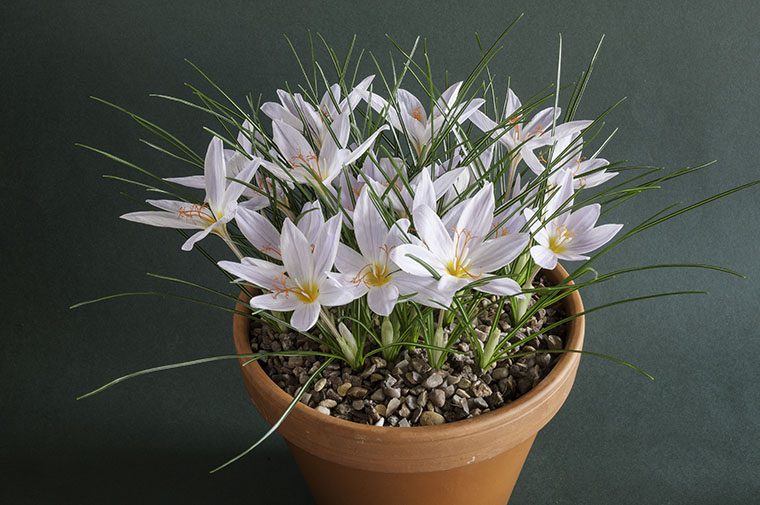
The full car park indicated a goodly number of exhibitors and made it tricky to find space for those coming without plants. Inside all was prepared, tables running the length of a dimly-lit hall, these loaded with cyclamen, crocuses, gentians, alliums and other immediately recognisable specimens together with some only identified by closer inspection. Across one end of the room a terrific display, mounted by the local group, chronicled the work of those to whom we owe much for the introduction of our treasured plants. Beginning in 1656 with Joseph Pitten deTournefort ‒ co-incidentally Don Peace brought a fine pan of Crocus tournefortii to the bench, it covered a span of other notable figures up to the present day. The result of twelve months spent assembling the photographs and information sheets, it richly deserved its Large Gold Medal.
A separate but adjacent room was filled with nursery stalls and the usual refreshments were doing a brisk trade. The discussions around the hall centred on the hardiness of some entries and whether Cyclamen foliage could be regarded as variegated in the botanical sense or whether it should be judged according to the dictionary definition: a clear case for clarification.
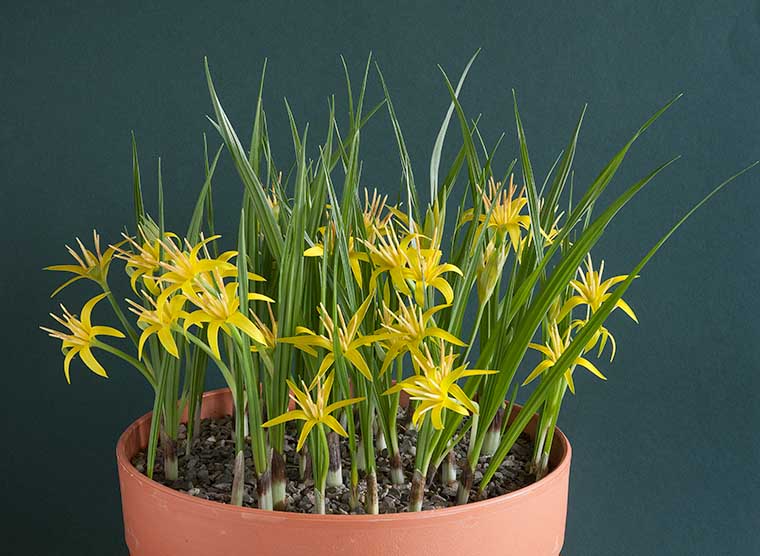
Bulbous plants from South Africa are making regular in-roads on the show circuit. This may be due to either climate change or a more lenient stance adopted by the current cohort of judges with regard to hardiness. Who knows? The exhibit of Empodium flexile presented the onlooker with a display of some two dozen flowers amid rush-like foliage. Native to south-western Africa, this is the one of only two or three of the seven known species in regular cultivation and as such is worth keeping a bulb grower’s eye out for, despite the rather unfortunate tendency for the foliage to overwhelm the flowers on occasion. While the flowers certainly carry a scent when newly opened, none could be detected on this occasion. As is the case with many autumn flowering bulbs, it should be treated to a summer dry watering regime. Not a true bulb, it does, however, have an underground, swollen perennating organ, most likely a swollen hypercotyl, as with other members of the Hypoxidaceae.
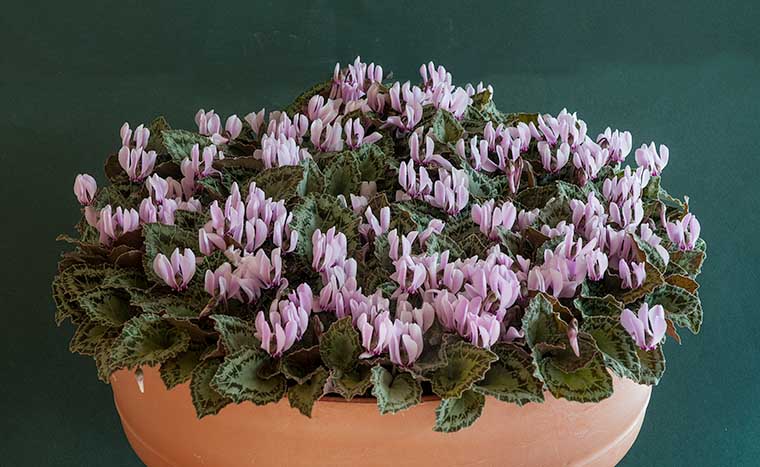
The debate about what to call the tuber-like root of the genus Cyclamen seems to be important to some humans but not, of course, to the plants. Now the question of whether the leaves can be considered variegated has emerged. Let us not concern ourselves with this, delighting instead in their beauty, and their collective place as one of the mainstays of the autumn shows. Much has been written about Cyclamen graecum , as surely befits a widespread species. A splendid specimen of Cyclamen graecum subsp. anatolicum with scores of pale pinkish flowers won the Farrer Medal for its much travelled exhibitors but the chief interest lay in the presentation of another form with almost purple-pink blossoms [below].
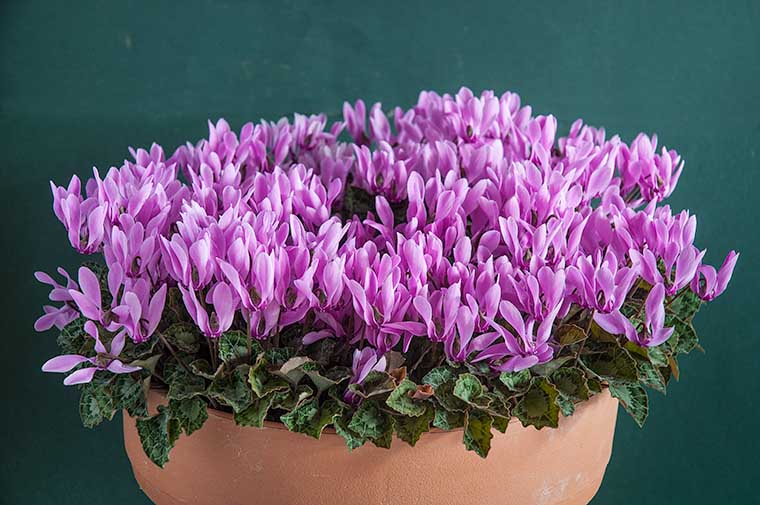
One of the most educational aspects of show-going is to be able to compare variations within a species, or in this case, subspecies, so that those who only see cloned plants in garden centres may have some slight understanding of specific variation. After all we are all Homos sapiens, but thank god, we are all different. To grow plants of the quality of those shown takes great skill, dedication and, I suspect, a certain sprinkling of good luck. Feeding is important and giving feed at the right time and at the right level of dilution is sometimes a well-kept secret but the need for winter protection and some shade for the foliage is just as important to success.
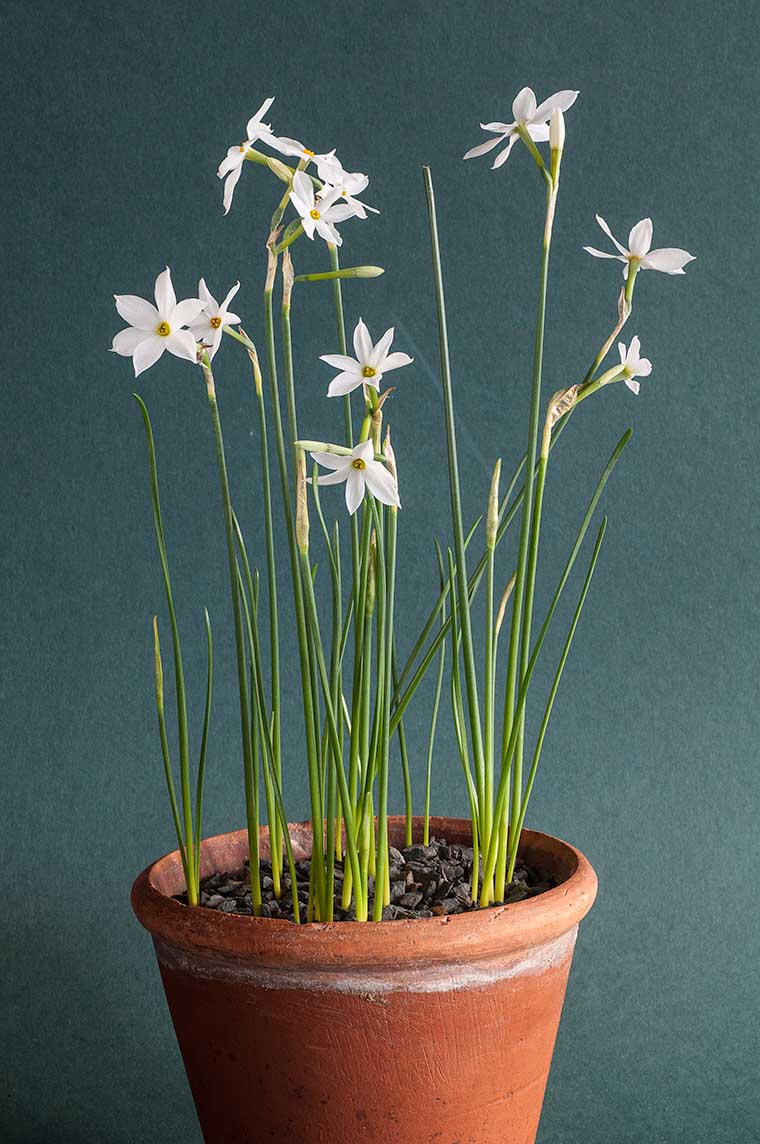
Daffodils are bulbs in all the right ways, with most species flowering in spring, so it might have surprised the novice visitor to see the slight, slender form of Narcissus miniatus among the exhibits. There is something of a conundrum about its name for it seems that the true N. miniatus is from a more eastern part of the Iberian Peninsula, whilst its close relative Narcissus serotinus is from the west and, therefore, more influenced by the Atlantic climate. In both cases some protection from cold is essential. The question of identity does not rest here, however, for some it may more correctly be named Narcissus x obseletus, a supposed hybrid between N. tazetta and N. serotinus. The current determination stems from the fact that the hybrid is fertile: thus a new species is born.
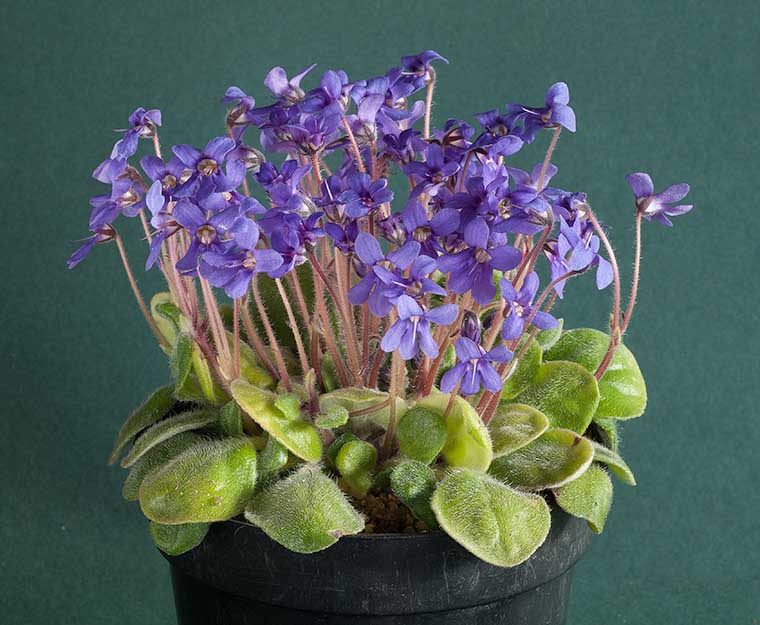
It is perhaps permissible to admit that some judges have concerns regarding the genus Petrocosmea. The developing interest in growing these members of the African Violet family is, of itself, insufficient reason for allowing those species reliant on a little leaked heat into the growing house to be accepted as hardy. There was a range of these in the foliage classes, and those for rock plants from Asia. P. flaccida [left] is a charming representative of these controversial entries with deep purple, far from flaccid flowers: the specific epithet flaccida means in translation ‘unable to keep up its own head’. Another representative, P. forrestii, was a little short of nitrogen, or else its slightly yellowing foliage might have been due to low temperatures. Originally found in Yunnan, it also gets into Sichuan. All these plants demand a moist, well-drained, organic compost, a good degree of shade in the summer and, dare one say, frost-free conditions.
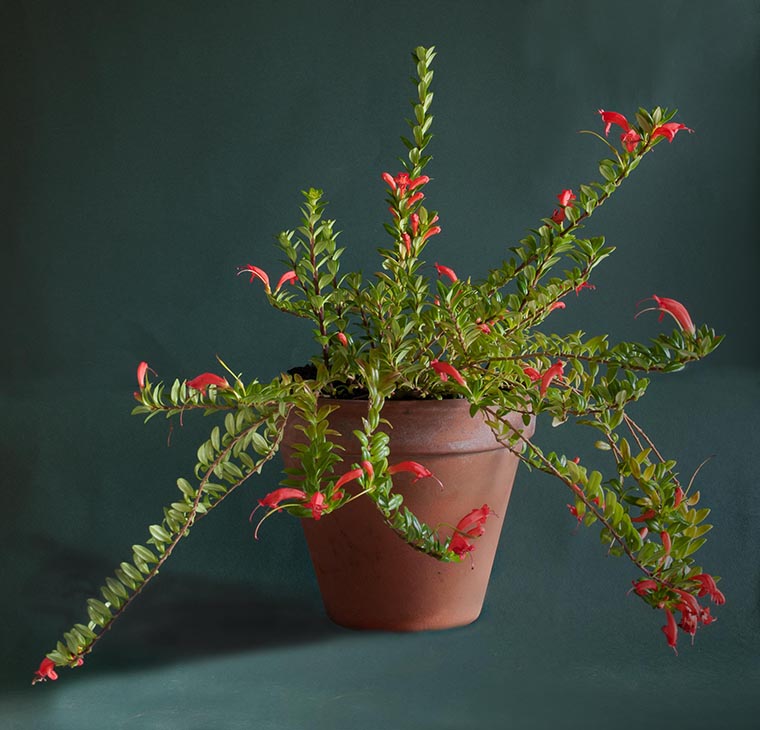
While not wishing to belabour the matter of hardiness, but as already mentioned there is a degree (pardon the pun) of concern concerning the exhibition of genera almost entirely confined to the tropics. Taking the family Gesneriaceae, the aforementioned Petrocosmea, familiar Ramonda, Saintpaulia and Streptocarpus all have flat flowers composed of only slightly curved petals. Not so Aeschynanthus buxifolia, which displays tubular red blossoms with extruded styles on arching, woody stems. Botanists eh! This bore the collection number KR7798, connoting a Keith Rushworth collection, though he is better-known for the introduction of trees, shrubs and Borinda species (bamboos), mostly from Vietnam. Along with his Primula cardeiodes (KR7362) and P. petelotti (KR7877), both from Mount Chapa, this sub-shrub needs frost protection.
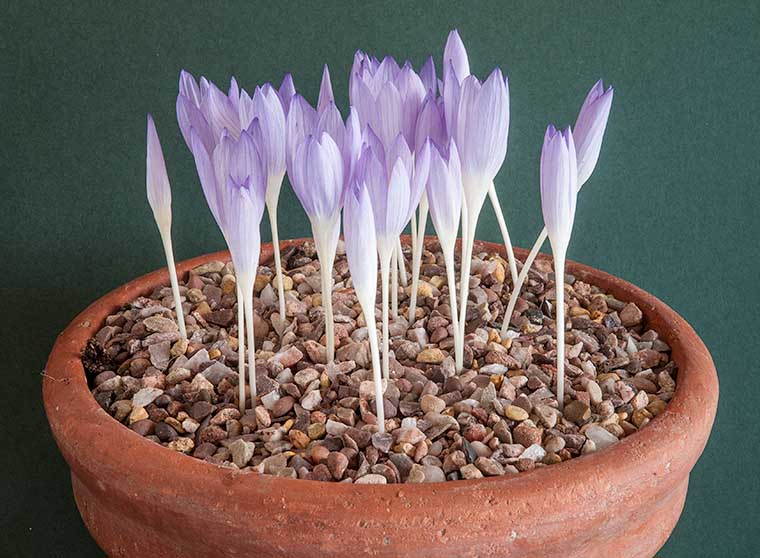
Autumn flowering Crocus provoke comment whenever they appear on the benches and are, for the most part, very welcome additions to the garden. Two species made notable appearances at Ponteland. Firstly, the naked, no leaves, lilac-coloured flowers of Crocus gilanicus, none of its perianth segments fully open but all the better, perhaps, for that. Introduced from its Iranian homeland just over 40 years ago, it has been described as ‘undistinguished’. Given the group seen, this is unduly dismissive. Not difficult to cultivate, it requires little more than an annual re-pot into free-draining compost and, once the foliage emerges in the New Year, some liquid feed. A top-dressing of sulphate of potash before the leaves senesce is recommended.
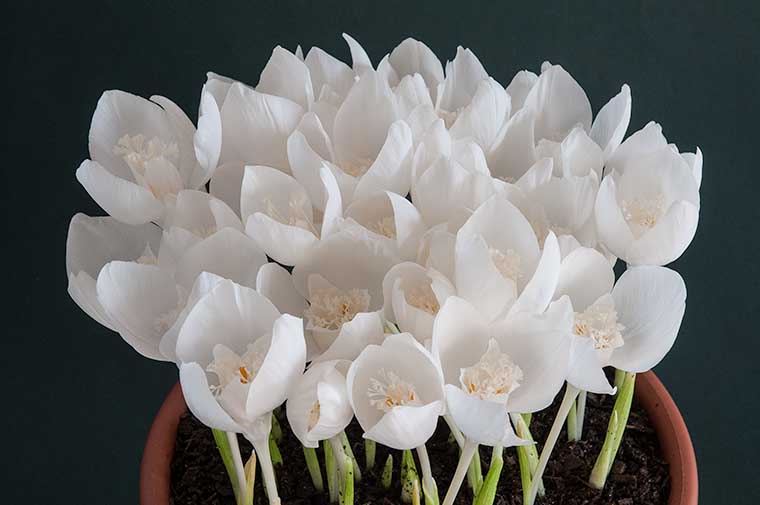
I suspect that respected Crocus expert E. A. Bowles was less familiar with the second species, Crocus banaticus, than we are today, for he suggested that it flowers later than October and with foliage showing, albeit only just. A white form would have excited him beyond imagination but the first of these was not introduced ‒ from Romania ‒ until 1967, while the selection ‘Snowdrift’ is more recent still. Like all examples of this distinctive species, the corms prefer to remain moist at all times, but need a fairly free-draining compost.
Author: Peter Cunnington
Photographer: Peter Maguire
